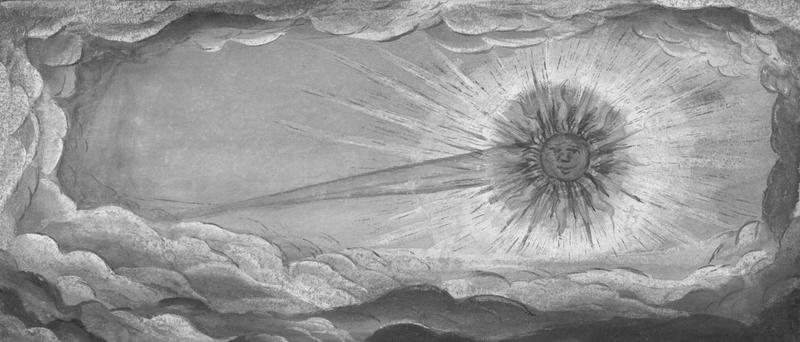by Samantha Fitch
April 6, 2022
Samantha Fitch is currently an instructor of English at Yavapai College in Prescott, Arizona. She graduated with a PhD in Literary Criticism from Indiana University of Pennsylvania, with a focus on Thing Theory and Gender Studies. She enjoys working on a wide variety of projects, including editing and her contributing work to Livingstone Online. She also volunteers her time to women’s and maternal health organizations.
My Volcano by John Elizabeth Stintzi; Two Dollar Radio; 330 pages; $18.99
John Elizabeth Stintzi is an award-winning novelist, poet, and visual artist. Their newest novel, My Volcano, is remarkably unique. Part eco-terror, part magical realism, Stintzi creates a modern, raw, real-world setting while introducing progressively more fantastical and magical events. The novel begins in modern-day New York City, where a volcano mysteriously begins to grow in the middle of Central Park. At first, this extraordinary event is met with the cynicism and skepticism that one would expect from the modern inhabitants of a metropolis. Billboards go up, real estate tycoons raise the price of housing, and the volcano becomes an exploited asset until it grows so high that it destroys nearly everything in the city.
The volcano’s growth mirrors the progress of the increasingly supernatural events that begin to happen all across the planet. The inclusivity of the real and the fantastical is paired by a refreshing inclusivity of characters: an 8-year-old boy in Mexico City; a trans writer living in the Heights; a nomadic herder in Mongolia; a researcher on the trail of volcano lore in Japan and his young assistant; a homeless man from Iran who resides in New York; a lesbian in San Francisco and her former lover in New York; and a young woman exploring the world of dating and sexuality in Russia; as well as the supernatural characters known as the “Otherwise”, who are “not part of the same perceptible world” and seem to have some control over these fantastical events.
Stintzi’s structure is disorienting, perhaps purposely so—an ever more dizzying array of the seemingly impossible set against a backdrop of the quotidian. Particularly at the beginning of the novel, the reader is thrown back and forth between lives, places, and even time and space. The chaos and confusion does not detract from the gripping suspense and disquietude with which the reader is moved through the pages of the novel; although Stinzi includes many characters who are leading separate lives in separate places, they are often connected through their anomalous experiences.
One of the first characters to be introduced to the reader is an eight-year-old boy in present day Mexico City. He is magically transported to 1516 Tenochtitlan, speaking perfect Nahuatl. While this eight-year-old experiences a shift in time, the nomadic herder in Mongolia experiences a shift in space, as he turns from a human into a wide and all-seeing “network” after being stung by a bee. His metamorphosis begins as he turns green, riddled with thorns; he can then infect other beings, seeing from their eyes. His transformation is not complete, but rather a continuous growth as he hunts for other beings to infect. As he adds more beings to his network, and as these beings are added, they make him feel more complete, as if each being was filling a part of him that had been missing. In a similar way, the Russian woman is transformed as her body becomes encapsulated inside a giant insect. As she joins her female lover on the summit of Koryaksky, their love results in a violent eruption that consumes the city below.
The characters and events are deftly intertwined; for instance, the researcher of volcano tales in Japan has a dream about the female Russian characters. In his dream, he hears one screaming, but realizes that it is a scream of ecstasy. Then, as “the perspective of the dream zoomed out, he saw that she was being burned atop a mountain,” and he realizes there’s a city below where the burning woman came from. The character of the San Franciso-based lesbian inhabits other people’s bodies as she dreams, until “the thread of herself got so small that it slipped out in the space between the atoms of her dense body, slipped between the seams of space entirely, fluttered on into the windless ether of both ever and never again.” Yet, despite these enchanting events, Stintzi serves the readers harsh doses of veracity in between chapters, using the space to include the real names of people who have suffered—reminders of violence and systemic racial injustices that bring us back to our own reality, a nod to the violent, volcanic aggression that erupts so frequently in our lives that the events often become unremarkable.
As a symbol, the volcano shows up in many facets throughout the novel. Like the mythology of ancient Greece and Rome, the volcano is both a place for hidden anger (e.g. this is where Zeus throws the Titans, who remain angry and hidden from the world) and power (the god Vulcan/Mars makes Zeus’ thunderbolts within a volcano). Similarly, the volcano is a symbol of anger in the Tantrum stories that the researcher is studying and in the eight-year-old’s experiences with the “cloud” possessing him, as well as in the company the San Francisco-based lesbian works for, where people can rent a booth for the catharsis of letting out all of their emotions; likewise, the eruption of a volcano brings forth formerly hidden magma to the surface, just as the people of Earth begin to experience the eruption of “the shadows,” subconscious thoughts that no one wants to acknowledge to anyone, not even themselves.
Ultimately, the volcano offers a symbol of hope—of renewal and creation. This dichotomy is reflected in the alternate endings; Stintzi seamlessly incorporates an end, only to sweep the reader on to the next section, where readers will find themselves set back in time, replaying the final events with altered outcomes. As always, the Otherwise are there, seeming to manipulate circumstances in order to produce divergent conclusions. Some ending options are bleak, offering only despair for the population of earth. But one —the final ending—promises a chance of healing and renewal. Embedded in the swift action, Stintzi writes “readers of a book should never be lost,” and indeed, the culmination of the novel offers the reader a feeling of solace, not loss—of transcendence, not defeat. Readers of My Volcano may grapple with the erratic, compelling, and transcendent prospect of our present and our future, but they’ll find it worth the extraordinary adventure.
__________________________________________________________________________________________________________________________________________________________________________
__________________________________________________________________________________________________________________________________________________________________________
__________________________________________________________________________________________________________________________________________________________________________
__________________________________________________________________________________________________________________________________________________________________________
__________________________________________________________________________________________________________________________________________________________________________
"Magic and Horror in John Elizabeth Stintzi's My Volcano" by Samantha Fitch
FICTION REVIEW
Image by Public Domain Review
©2022 West Trade Review
Stay Connected to Our Literary Community. Subscribe to Our Newsletter




